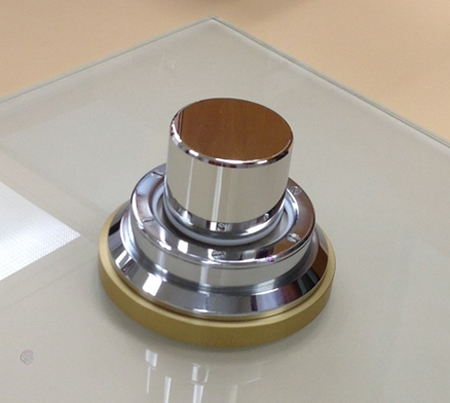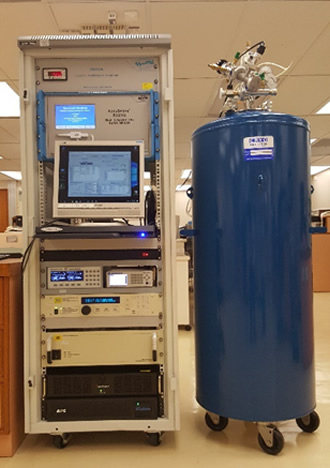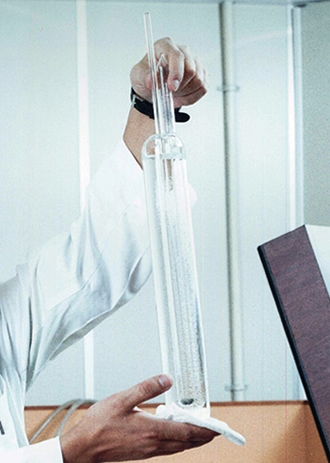General Public
The Revision of the SI
The Definitions of the Seven SI Base Units Before and After the Revision of the SI on 20 May 2019
Details of the definitions of the seven SI base units before and after the revision are summarized in the following table. Four of the seven base units, namely the kilogram, the ampere, the kelvin and the mole (highlighted in red in the table) will be redefined by fixing the values of the Planck constant (h), the elementary charge (e), the Boltzmann constant (k) and the Avogadro constant (NA). The substantive definitions for the remaining three SI base units, namely the second, the metre and the candela remain unchanged. However, the texts for their definitions were amended by CGPM to unify the presentations for all the base units.
| Quantity | Name | Symbol | Definition up to 20 May 2019 | Definition after 20 May 2019 |
|---|---|---|---|---|
| time | second | s | the duration of 9192631770 periods of the radiation corresponding to the transition between the two hyperfine levels of the ground state of the caesium-133 atom. | It is defined by taking the fixed numerical value of the caesium frequency ΔνCs, the unperturbed ground-state hyperfine transition frequency of the caesium 133 atom, to be 9192631770 when expressed in the unit Hz, which is equal to s-1. |
| length | metre | m | the length of the path travelled by light in vacuum during a time interval of 1/299792458 of a second. | It is defined by taking the fixed numerical value of the speed of light in vacuum c to be 299792458 when expressed in the unit m s-1, where the second is defined in terms of the caesium frequency ΔνCs. |
| mass | kilogram | kg | the mass equal to the mass of the international prototype of the kilogram kept by the International Bureau of Weights and Measures. | It is defined by taking the fixed numerical value of the Planck constant h to be 6.62607015×10-34 when expressed in the unit J s, which is equal to kg m2 s-1, where the metre and the second are defined in terms of c and ΔνCs. |
| electric current | ampere | A | that constant current which if maintained in two straight parallel conductors of infinite length, of negligible circular cross section, and placed 1 metre apart in vacuum, would produce between these conductors a force equal to 2×10-7 newton per metre of length. | It is defined by taking the fixed numerical value of the elementary charge e to be 1.602176634×10-19 when expressed in the unit C, which is equal to A s, where the second is defined in terms of ΔνCs. |
| thermo- dynamic temperature | kelvin | K | the fraction 1/273.16 of the thermodynamic temperature of the triple point of water. | It is defined by taking the fixed numerical value of the Boltzmann constant k to be 1.380649×10-23 when expressed in the unit J K-1, which is equal to kg m2 s-2 K-1, where the kilogram, metre and second are defined in terms of h, c and ΔνCs. |
| amount of substance | mole | mol | the amount of substance of a system which contains as many elementary entities as there are atoms in 0.012 kilogram of carbon 12. Note: When the mole is used, the elementary entities must be specified and may be atoms, molecules, ions, electrons, other particles, or specified groups of such particles. |
One mole contains exactly 6.02214076×1023 elementary entities. This number is the fixed numerical value of the Avogadro constant, NA, when expressed in the unit mol-1 and is called the Avogadro number. The amount of substance, symbol n, of a system is a measure of the number of specified elementary entities. An elementary entity may be an atom, a molecule, an ion, an electron, any other particle or specified group of particles. |
| luminous intensity | candela | cd | the luminous intensity, in a given direction, of a source that emits monochromatic radiation of frequency 540×1012 hertz and has a radiant intensity in that direction of 1/683 of a watt per steradian. | It is defined by taking the fixed numerical value of the luminous efficacy of monochromatic radiation of frequency 540×1012Hz, Kcd, to be 683 when expressed in the unit lm W-1, which is equal to cd sr W-1, or cd sr kg-1 m-2 s3, where the kilogram, metre and second are defined in terms of h, c and ΔνCs. |
Effects of the Revision of the SI on the General Public of Hong Kong, China
The kilogram
The value of the mass standards will remain unchanged after the redefinition of the kilogram. The redefinition of the kilogram should have no impact on the general public.
The ampere
The practical realization of revised SI will link the electrical units to the fixed values of physical constants, including Planck constant (h) and elementary charge (e). This will lead to a one-time change of about + 0.1 parts per million (ppm) for voltage values and of about + 0.02 ppm for resistance values. These small changes should have no impact on the general public.
The kelvin
The readings of previously calibrated thermometers will not be affected by the redefinition of the kelvin and no adjustments are needed. There should be no impact on the general public.
The mole
The redefinition of the mole should have no impact on the general public.
Effects of the Revision of the SI on SCL Customers
The kilogram
The value of the mass standards will remain unchanged after the redefinition of the kilogram. The measurement uncertainties of the mass standards will be slightly larger than that before. However, only those high echelon laboratories such as the SCL will need to review and revise, if necessary, the measurement uncertainties of their mass standards. The uncertainties offered by SCL to our customers will be broadly unaffected.
The ampere
The redefinition of the ampere will lead to a one-time change of about + 0.1 parts per million (ppm) for voltage values and of about + 0.02 ppm for resistance values. For the vast majority of measurement users, no action need be taken until the next recalibration. Practitioners working at the highest level of accuracy would need to adjust the values of their standards and to review their measurement uncertainty budgets.
SCL implemented the change on 20 May 2019. Users of DC voltage standards and resistance standards might need to apply correction or arrange recalibration before the standard's next use for traceability. SCL has contacted affected users in 2019 about the change and related arrangement for re-calibration of their standards.
The kelvin
The redefinition of the kelvin has no effect on the results, the uncertainties and traceability of temperature measurements conducted by SCL. The readings of previously calibrated thermometers will not be affected by the redefinition of the kelvin and no adjustments are needed.
The mole
The mole is more related to chemical metrology. Generally speaking the redefinition of the mole will have no impact to SCL customers.
Effects of the Revision of the SI to the Measurement Standards of SCL
The kilogram
In general, the redefinition of the kilogram will have no effect on the mass standards in Hong Kong. The Hong Kong, China copy of the International Prototype Kilogram, No. 75, will remain one of the reference mass standards in Hong Kong. The values of the mass standards will remain unchanged after the redefinition of the kilogram. However, the measurement uncertainties of the mass standards will be slightly larger than that before. SCL will review and revise, if necessary, the measurement uncertainties of our mass standards.
 Copy No. 75 of the International Prototype of the Kilogram
Copy No. 75 of the International Prototype of the Kilogram
The ampere
Despite the redefinition of the ampere, the primary methods of realization, including the Josephson and the quantum Hall effect, remain unchanged. The SCL has equipped with the primary standards for the practical realization of the ampere - the Josephson Array Voltage Standard and the Quantum Hall Resistance Standard. SCL has been prepared for the changes to take place on the implementation date of 20 May 2019.
 Programmable Josephson Voltage Standard (PJVS) a primary standard for direct current (DC) voltage
Programmable Josephson Voltage Standard (PJVS) a primary standard for direct current (DC) voltage
 Quantized Hall Resistance Standard (QHR) a primary standard for resistance (ohm)
Quantized Hall Resistance Standard (QHR) a primary standard for resistance (ohm)
The kelvin
The precise measurement of thermodynamic temperatures is difficult. Practical temperature scales were therefore introduced to make use of instruments such as platinum resistance thermometers which are easier to use and give more precise measurement results. The International Temperature Scale of 1990 (ITS-90) adopted by the International Bureau of Weights and Measures (BIPM) will continue to be the worldwide effective method for practical temperature measurement after the redefinition of the kelvin. SCL will continue to adopt the measurement standard in compliance with the ITS-90 to offer temperature calibration services traceable to the revised SI.
 Triple Point of Water
Triple Point of Water
The mole
The mole is more related to chemical metrology. SCL does not have measurement standards for the realization of the mole.